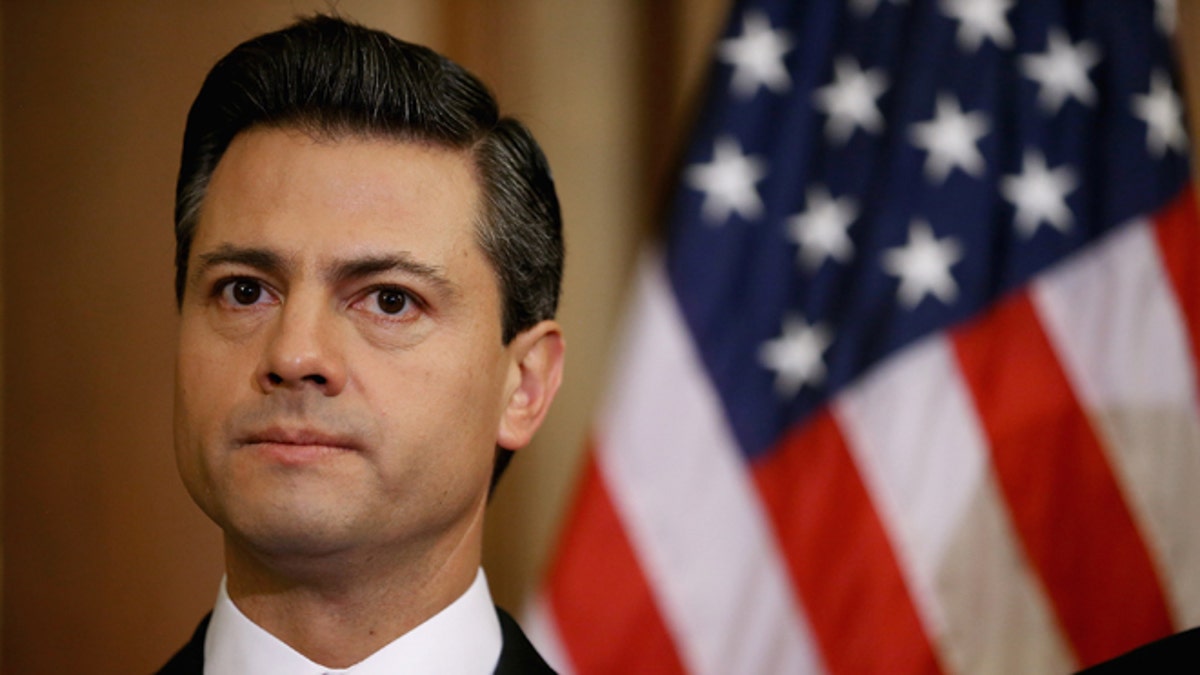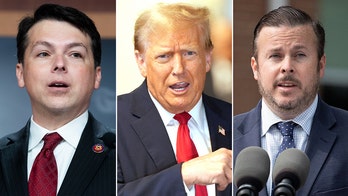
WASHINGTON, DC - NOVEMBER 27: Mexican President-Elect Enrique Pena Nieto delivers brief remarks after meeting with Democratic members of the House in the Rayburn Room at the U.S. Capitol November 27, 2012 in Washington, DC. Nieto, of Mexico's Institutional Revolutionary Party, will also visit the White House and meet with President Barack Obama today, days before he takes office on December 1. (Photo by Chip Somodevilla/Getty Images) (2012 Getty Images)
Mexican President Enrique Peña Nieto will be in Washington, D.C., on Jan. 6, to meet with President Barack Obama.
According to the official White House statement, "The two leaders will highlight the importance of expanding dialogue and cooperation between the United States and Mexico on economic, security and social issues, as well as underscoring the deep cultural ties and friendship that exist between our two countries."
But for Peña Nieto much more than platitudes may be at stake.
Once praised, both in Mexico and abroad, for a number of groundbreaking reforms, Peña Nieto has in the last six months seen his standing plummet thanks to the corruption scandals, rampant violence – not a small amount of which is carried out by official and unofficial agents of the government – and demonstrations that have roiled the country.
And while the U.S. visit won’t turn things around completely for the Mexican leader, many analysts say it is crucial for him to secure the continued support of the U.S. in Mexico's fight against drug cartels and, just as crucially, to convince American investors to put their money on Mexico.
"He's coming to Washington to provide a boost for his presidency in 2015," Jason Marczak, the deputy director of the Adrienne Arsht Latin America Center at the Atlantic Council told Fox News Latino. "What Mexicans will be closely watching is: Will he leave Washington with something to show for his visit?"
Peña Nieto began his administration in December 2012 hoping to concentrate on economic and legal reforms and avoid the focus on drug-gang violence that dominated the term of his predecessor, Felipe Calderón. The disappearance of 43 students from the Raúl Isidro Burgos Rural Teachers' College in Ayotzinapa, Guerrero, and the alleged collusion between a local mayor, his wife, the municipal police and a drug gang, however, have forced the issue back to the forefront.
"This is not what he would have wanted to come away from a meeting four months ago," Marczak said. "He would have liked to talk about the economy, but the situation has changed."
The meeting between Obama and Peña Nieto may be the Mexican leader’s best hope for increasing the United States role in the Mérida Initiative – also pejoratively known as "Plan Mexico" – the 2008 security agreement between the two countries that, among other things, has provided $2.1 billion to Mexico to combat drug trafficking.
While the Initiative is loosely modeled after a similar effort in Colombia, many critics claim that the plan is doing more harm than good – citing as evidence the widespread corruption in Mexico’s local police forces and a murder rate that has soared since implementation.
The disappearance of the 43 students and the Mérida Initiative have sparked outrage in the Mexican community living in the U.S., and some groups are calling for protests and demonstrations in front of the White House and outside Mexican consulates across the country during Peña Nieto’s visit.
“The Ayotzinapa 43 have become a symbol of the over 100,000 murdered and 25,000 disappeared in the last 8 years since the escalation and increased militarization of the Drug War by the U.S. and Mexican governments,” The advocacy group SOA (School of the Americas) Watch said in a statement. “It is a shameless exhibition of the open support of Peña Nieto's narco-government and a slap in the face of the Mexican people in their rightful clamor for security, well-being, peace, democracy and true justice.”
The other main issue facing the Mexican leader is corruption and the scandal surrounding his wife's 2012 purchase of a $7 million mansion from a company that had won extensive contracts from the State of Mexico while Enrique Peña Nieto was its governor.
“What’s worrisome here isn’t so much the corruption, because corruption has been so endemic for so long,” said Carlos Bravo, a political analyst at the Mexican think tank, the Center for Research and Teaching in Economics (CIDE), according to the Dallas Morning News. “What’s utterly shocking is that we’re finding this out in year two of Peña Nieto’s six-year term. He’s so weakened that you have to ask what does he do for four years? What can he really accomplish?”
Polls published earlier this month .
Just nine months after Peña Nieto appeared on the cover of Time magazine above the headline "Saving Mexico," the president can more realistically hope to save some face.
Recent polls show his approval ratings have fallen to around 40 percent. It's one of the lowest levels for a Mexican president since Ernesto Zedillo presided over the 1994-1995 economic crisis.
The Associated Press contributed to this report.




